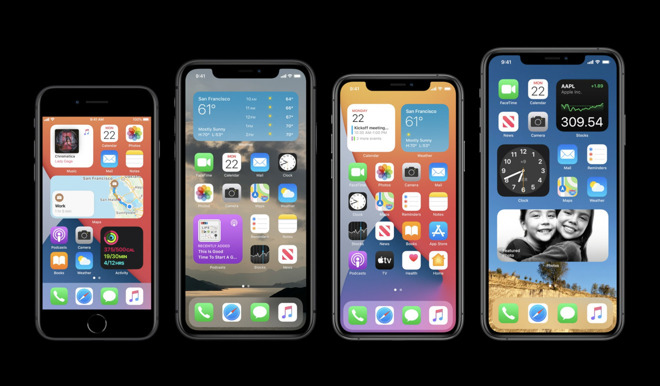Users can now set Microsoft Outlook, Edge as iOS 14 defaults
Apple's newly released iOS 14 allows users to set third-party email apps or browsers as default options, and Microsoft has already added support.

Credit: Apple
The iOS 14 update, released on Wednesday, lets users set third-party apps as their default web browser or mail client. With support added on Apple's end, developers must also make their apps compatible with the feature.
Microsoft's Outlook email client supports the iOS 14 feature at launch. Users can now set Outlook as their default mail client by heading to system Settings, tapping Outlook, and selecting "default email app."
The same goes for Microsoft's Edge browser, which was updated earlier in the week to support the new iOS 14 feature.
Other popular email providers, such as Gmail, can not yet be added as a default client. Google Chrome, however, does support the option.
Not every mail and browser app will pass muster, as Apple has some guidelines for software that can be set as default alternatives. For example, apps need to meet performance benchmarks and ensure that certain mail scheme specifications are met.
That said, the rules are fairly flexible. Mail apps can include user-set mail screening parameters, for example, a feature offered by Basecamp-created email service Hey.

Credit: Apple
The iOS 14 update, released on Wednesday, lets users set third-party apps as their default web browser or mail client. With support added on Apple's end, developers must also make their apps compatible with the feature.
Microsoft's Outlook email client supports the iOS 14 feature at launch. Users can now set Outlook as their default mail client by heading to system Settings, tapping Outlook, and selecting "default email app."
The same goes for Microsoft's Edge browser, which was updated earlier in the week to support the new iOS 14 feature.
Other popular email providers, such as Gmail, can not yet be added as a default client. Google Chrome, however, does support the option.
Not every mail and browser app will pass muster, as Apple has some guidelines for software that can be set as default alternatives. For example, apps need to meet performance benchmarks and ensure that certain mail scheme specifications are met.
That said, the rules are fairly flexible. Mail apps can include user-set mail screening parameters, for example, a feature offered by Basecamp-created email service Hey.

Comments
Stop that. It's not that bad. I hate how mean people are with Microsoft. It's more like stubbing your toe on a couch.
This doesn't make sense now that I think about it. Why would I want a link to open a 3rd party browser? Apple should just keep improving it's products.
Maybe there was some antitrust BS going on behind the scenes....
iOS wouldn't be half as capable as it is if Apple followed your thinking.
But to say without a doubt iOS is easier is just an opinion. No more valid than an opinion that Android is. Neither is that difficult... for the young or the stereotypical "clueless" seniors. (Not really sure why anecdotal seniors are always, always so helpless. Narrative building maybe, idk. The one's I know are pretty sharp.) ←Anecdotes, like buttholes amirite? Iamrite.
As for seniors, it's not a narrative, it's simply reality. They didn't grow up with computing gizmos, and they don't have exceptionally fine motor control, making the nuances between tap, long-tap, tap-and-drag more challenging. Hell my dad still double-clicks links in web pages, and listening to Gruber's podcasts this is not unusual...they just didn't grow up with this stuff so the reasons for a click vs a double click (double-clicking is a shortcut on desktop OSes for "run") are lost on them. Since I support so many old people, getting them to the easier platform is the name of the game. Android was always jankier, from settings to the simple act of scrolling. Maybe it's gotten better in recent years, dunno.